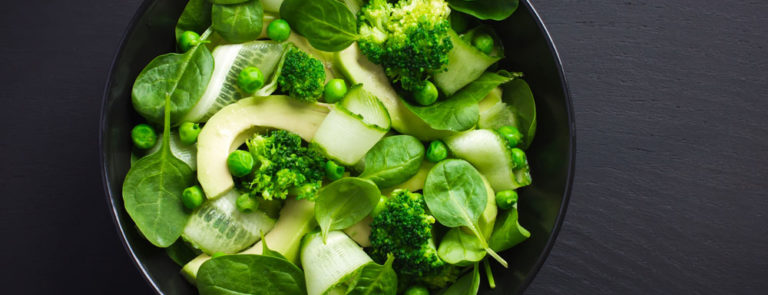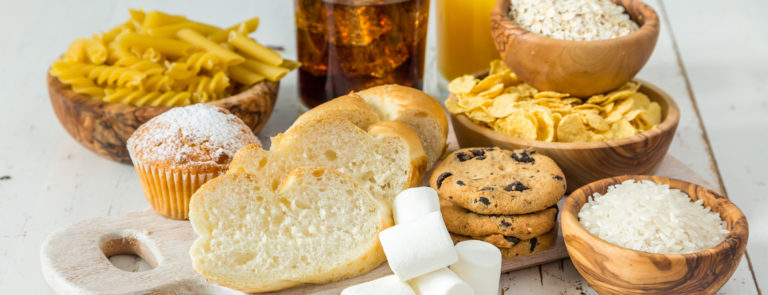10% off £35
Folic acid deficiency: Causes, symptoms, treatment & more

How much do you know about folic acid?
Getting enough folic acid is vital for everyone. Low folic acid levels can cause symptoms from fatigue to muscle weakness.1
In this article, we look at what folic acid is, discuss the signs of folic acid deficiency and what causes it, as well as what you can do if you’re running low.
What is folic acid?
Folic acid is a member of the B vitamin family and is also known as vitamin B9.
Folate refers to the natural form of vitamin B9 which is found in food. Folic acid is the man-made kind, which is found in vitamin supplements.2
Folic acid is water soluble, which means the body doesn’t store it and excess amounts are excreted in urine.3
Folic acid has various functions:4,5,6
- In pregnancy, it helps the baby’s brain, skull and spinal cord develop normally
- It helps your body make red blood cells which carry oxygen around your body
- It helps to make amino acids
- It helps the body create and maintain healthy new cells
Most adults need around 200mcg folic acid per day.7
What is folic acid deficiency?
Folic acid deficiency – or folate deficiency – occurs when you have low folate levels in your blood.
Folic acid helps your body make red blood cells, which carry oxygen around your
body. If you don’t have enough red blood cells, your organs and tissues receive less oxygen and don’t function as well.8
This is what happens in cases folic acid deficiency, which can cause fatigue and make you feel weak, along with other symptoms.
Folic acid deficiency symptoms
Folate deficiency symptoms include:9
- reduced sense of taste
- diarrhoea
- numbness and tingling in the feet and hands
- muscle weakness
- sore tongue
- psychological problems such as depression
What is folic acid deficiency anaemia?
Folic acid deficiency anaemia is a condition which results from prolonged low levels of folic acid in the body. Symptoms include:10
- weakness
- fatigue
- breathlessness
- heart palpitations
- pale skin
- headaches
- weight loss and loss of appetite
- pins and needles
- tinnitus
- changes in sense of taste
- psychological problems such as depression
8 folic acid deficiency causes
Folic acid deficiency can be a result of one, or a combination of, the following:11,12,13
-
A poor diet
If you don’t eat enough folate-rich foods regularly, your body can become low in folic acid in a matter of weeks. This makes incorporating folates into your daily food choices an important part of a healthy, balanced diet.
-
A gastrointestinal condition
A condition affecting the digestive tract, such as coeliac disease, Crohn’s disease or inflammatory bowel disease (IBD) which prevent the effective absorption of some vitamins can lead to folic acid deficiency.
-
Excessive alcohol use
Drinking too much alcohol can affect how effectively your body absorbs folates.
-
Certain medications
Some medications, such as methotrexate, can prevent the effective absorption of folate.14
-
Pregnancy
Women absorb folic acid more slowly during pregnancy. The developing baby needs lots of folic acid to grow, too.
This is why taking a daily 400mcg folic acid supplement is recommended if there’s a chance you might become pregnant, and throughout the first 12 weeks of pregnancy.15,16
Handpicked content: Folic acid for pregnancy
-
Older age
Folic acid deficiency in the elderly is not uncommon. Low folate levels affect around 1 in 10 people aged 75 or over and 1 in 20 people aged 65 to 74.17
-
Kidney problems
People undergoing kidney dialysis – where an artificial kidney is used to filter the blood – usually experience folic acid deficiency. This is usually treated with a folic acid supplement as directed by a doctor.18
-
Genetics
In some rare cases, folic acid deficiency is the result of a genetic condition known as homocystinuria due to MTHFR deficiency which stops those with it from metabolising folate. This is usually identified in childhood, but can sometimes present in later life.19
What are the right folic acid levels?
In most people, the body has about 1,000-20,000 mcg of folate stored. Most adults need about 200 mcg per day to replenish the daily losses.20,21
Normal serum folate concentrations have been reported to range from 0.5 to 0.015 micrograms per millilitre.22
You won’t know your exact levels without a folic acid blood test. If you are at risk of high or low folic acid levels, your doctor will perform a blood test to diagnose a possible folic acid deficiency.
What is considered high folate levels?
Generally, a high serum folate concentration would be over 0.015 micrograms per millilitre.23
However, people’s folate needs differ. Remember, folate requirements can increase during pregnancy, and someone being treated for folic deficiency would require a high dose of folic acid supplementation to correct their levels.
What is a low folate level?
In general, serum folate concentrations below 0.005 mcg/ml indicate folate deficiency and concentrations below 0.002 mcg/ml usually result in anaemia.24
Again, you won’t know your exact levels without a blood test. If required, your doctor will perform a blood test to diagnose a possible folic acid deficiency.
Can you take too much folic acid?
Just as low folate levels are a risk factor for cancer and cardiovascular disease, too much folate is thought be a risk factor for disease, too.25
In one study, taking folic acid daily over several years was associated with benign tumour growth. This dose was 1000mcg daily - higher than the recommended dose (unless as a treatment for severe folate deficiency anaemia, in which case the dose would be taken for a much shorter duration) and extremely unlikely to be achieved through food. 26
Current guidelines declare folic acid is generally very safe.27 The NHS recommends up to 15,000mcg of folic acid in certain cases, such as treating severe folate deficiency anaemia.28
Taking too much is unlikely to harm you, although more research on the highest safe dose of folic acid is needed.
What can you do if you have symptoms of low folic acid?
Speak to your doctor. They may arrange a blood test to determine your exact levels and diagnose a possible folic deficiency.
They will also help to identify the reason for your deficiency. They will then suggest folic acid deficiency treatment - usually either a change to your diet, or a folic acid supplement. If your folate levels are particularly low, your doctor may suggest an intravenous option.
Folic acid supplements
Most people can get enough folate from their diets. However, if you’ve been advised to take supplements, taking folic acid tablets daily for around four months should correct your deficiency.29
If the cause is another condition or medication, you may need to continue for longer or receive an intravenous dose.
It’s worth knowing that folic acid supplements should be taken with food. The bioavailability of folic acid taken with a meal is approximately 85% compared with folic acid consumed while fasting.30
15 foods rich in folate 31,32
-
Leafy, green vegetables
Broccoli, spinach, kale and spring greens all contain folate.
100g broccoli contains 63mcg folic acid, spinach has 194mcg per 100g, kale contains 62mcg per 100g, and spring greens (known as collards in the USA) contain 129mcg per 100g.
-
Asparagus
With 52mcg folate per 100g, asparagus is worth adding to your weekly rotation. Serve it alongside some other folate-rich foods on this list to super-charge your folate-rich diet.
-
Citrus fruits
Oranges, grapefruits, and other citrus fruits naturally contain folate. Oranges have 30mcg per 100g, while grapefruit has 13mcg per 100g.
-
Lentils
Lentils are an incredible source of folic acid, especially for vegans and vegetarians. They contain around 479mcg folic acid per 100g.
-
Mushrooms
Mushrooms have 17mcg folic acid per 100g and can be added to countless savoury dishes to bump up your family’s folate levels.
-
Offal
Offal or organ meat (non-muscular parts of animal meat) including kidney and liver is the richest source of folate. 100g chicken liver, for example, contains 588mcg folate.
It’s important to note that pregnant women shouldn’t eat organ meat as it contains high amounts of vitamin A, which can be harmful to a developing baby.
-
Wheat bran
Wheat bran and other wholegrain foods are excellent source of folate. Wheat brain itself has 70mcg per 100g, brown bread has 85mcg folate per 100g and brown rice has 20mcg per 100g.
-
Peas
Peas are surprisingly high in folate with 42mcg per 100g.
-
Cereals fortified with folic acid
In the UK, many common breakfast cereals are fortified with folic acid. 100g corn flake cereal contains around 357g folic acid.
-
Eggs
Eggs are a great source of folate with 1 large egg (about 50g) containing around 23mcg folate.
-
Brussels sprouts
Love them or hate them, Brussels sprouts are very high in folate with 60mcg folate per 100g.
-
Nutritional yeast extract spread
Yeast spreads are usually fortified with folic acid, along with other vitamins such as B12.
100g yeast extract spread can contain up to 1250mcg per 100g! You wouldn’t be able to eat that much, but one portion comes in at around 100mcg folate. 33
-
Wakame seaweed
With 157mcg per 100g, wakame seaweed is an excellent source of natural folate. This super-healthy edible seaweed is great in soups, smoothies and salads.34
-
Walnuts
Walnuts have 31mcg folate per 100g. We love them crushed and sprinkled on morning oats.
-
Kiwi fruit
Kiwi fruit have 25mcg folate per 100g, making them an excellent fruit source of folate.
Summary: Are you low in folic acid?
- A folic acid deficiency causes a variety of symptoms triggered by a decrease in the amount of oxygen in your body. Sometimes it can result in a condition known as folate deficiency anaemia.
- Folate is water-soluble so your body can’t build up and store it for long periods. To avoid low folic acid symptoms you may need to increase your regular daily intake, either from food or a dietary supplement.
- First, seek advice from your doctor to check supplements are right for you and your circumstances.
Last updated: 15 June 2021
- https://www.nhs.uk/conditions/vitamin-b12-or-folate-deficiency-anaemia/
- https://www.nhs.uk/medicines/folic-acid/
- https://pubchem.ncbi.nlm.nih.gov/compound/Folic-acid
- https://www.nhs.uk/medicines/folic-acid/
- https://ods.od.nih.gov/factsheets/Folate-Consumer/
- https://www.intechopen.com/books/functional-food-improve-health-through-adequate-food/folic-and-folate-acid
- https://assets.publishing.service.gov.uk/government/uploads/system/uploads/attachment_data/file/618167/government_dietary_recommendations.pdf
- https://www.hopkinsmedicine.org/health/conditions-and-diseases/folate-deficiency-anemia
- https://www.nhs.uk/conditions/vitamin-b12-or-folate-deficiency-anaemia/
- https://www.nhs.uk/conditions/vitamin-b12-or-folate-deficiency-anaemia/
- https://www.hopkinsmedicine.org/health/conditions-and-diseases/folate-deficiency-anemia
- https://www.crohnscolitisfoundation.org/sites/default/files/legacy/science-and-professionals/nutrition-resource-/micronutrient-deficiency-fact.pdf
- https://www.ncbi.nlm.nih.gov/books/NBK535377/
- https://pubmed.ncbi.nlm.nih.gov/3896745/
- https://www.nhs.uk/medicines/folic-acid/
- https://www.hopkinsmedicine.org/health/conditions-and-diseases/folate-deficiency-anemia
- https://www.nhs.uk/conditions/vitamin-b12-or-folate-deficiency-anaemia/
- https://www.kidney-international.org/article/S0085-2538(15)47573-8/fulltext
- https://rarediseases.info.nih.gov/diseases/2734/homocystinuria-due-to-mthfr-deficiency
- https://www.ncbi.nlm.nih.gov/books/NBK535377/
- https://assets.publishing.service.gov.uk/government/uploads/system/uploads/
- https://pubchem.ncbi.nlm.nih.gov/compound/Folic-acid#section=Bionecessity
- https://pubchem.ncbi.nlm.nih.gov/compound/Folic-acid#section=Bionecessity
- https://pubchem.ncbi.nlm.nih.gov/compound/Folic-acid#section=Bionecessity
- https://www.ncbi.nlm.nih.gov/pmc/articles/PMC2790187/
- https://pubmed.ncbi.nlm.nih.gov/17551129/
- https://www.nhs.uk/medicines/folic-acid/
- https://www.nhs.uk/medicines/folic-acid/
- https://www.nhs.uk/conditions/vitamin-b12-or-folate-deficiency-anaemia/causes/
- https://www.sciencedirect.com/topics/neuroscience/folic-acid
- https://fdc.nal.usda.gov/index.html
- https://www.eatthismuch.com/food/browse/?q=&type=food
- https://www.marmite.co.uk/nutrition-information.html
- https://www.eatthismuch.com/food/nutrition/seaweed,2309/














